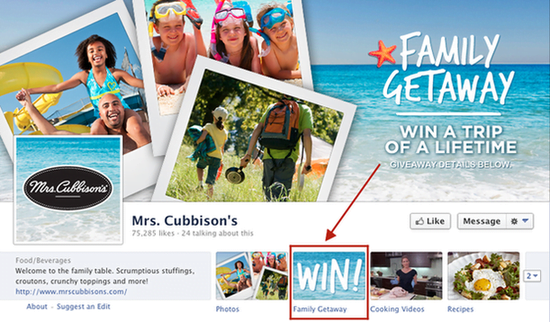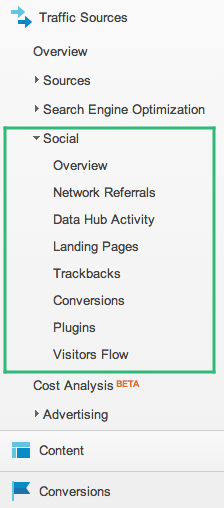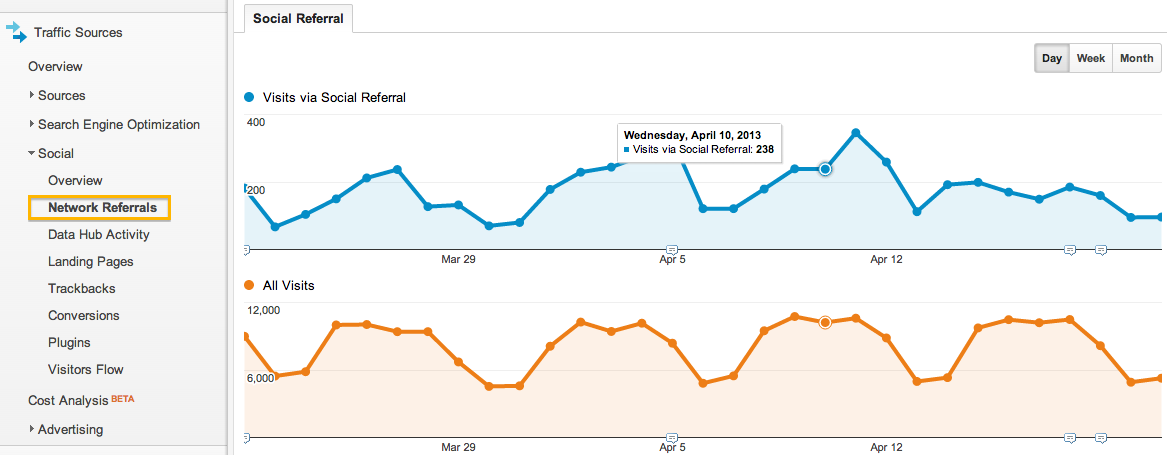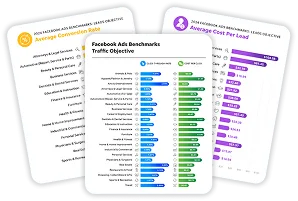
Measuring the success of various campaigns is a core aspect of a marketer’s job. It’s essential to see how your marketing efforts are contributing to the business’s bottom line. Yet according to Social Media Today, 70% of online businesses that utilize social media don’t bother to measure ROI.
It’s pretty shocking to discover that the majority of online businesses are conducting their social media marketing completely in the dark, with no clues as to how social media contributes to the success of their businesses. To be fair, it’s not entirely their fault – social media ROI is a difficult beast to tame, the bane of marketers around the world.
Why is Measuring Social Media ROI Difficult?
Some say that measuring the ROI of social media simply can’t be done! Like traditional billboard advertising, some businesses throw up their social media campaigns and hope for the best, trusting that something good will come of their efforts.
Part of the reason that measuring social media ROI is so difficult is that many companies marketers try to measure social media success through the social channel, examining metrics concerning “likes” and “tweets” that aren’t easy to monetize, while businesses are primarily concerned with website visits, email subscribers, calls and sales. Throwing around foreign terminology that doesn’t relate to the bottom line confuses business executives and can often make marketers sound like snake oil salesman.
Feel younger, look better, and become better endowed with N.W. Dickens’ miraculous elixir!
When measuring ROI with social media, it’s helpful to take into account how you measure other advertising channels, and incorporate familiar business phrasing. If you use PPC advertising, try assessing social media in terms of cost-per-click or cost-per-impression. If you focus on lead gen, try measuring in terms of cost per acquisition, etc. This adds credibility to your efforts and makes it easier to compare social media marketing with other forms of online marketing.
What Social Media Does Best: Generating Soft Leads
Social media is a prime tool for developing brand identity and familiarity, building engagement, and creating “soft” leads. There is a good amount of confusion about where social media exists on the conversion funnel, and understanding how social media serves as a place to gather soft leads helps provide some illumination.
Soft leads exchange their email address for something of value. This item of value can be in the form of a white paper, ebook, or physical commodity like a coaster set or free sample pack. The hope is that eventually, with the help of email marketing, soft leads will develop into hard leads, which are customers or very qualified prospects.
The exchange of an email address for an online or offline good is common practice on social media sites like Facebook. It gets a bit tricky because you can’t get a user’s email addresses directly on Facebook, but must instead go through a third-party app. It’s fairly simple though – there are many third-party Facebook apps which help you build submission forms or contest pages that are then set up as tabs within Facebook.
Since most businesses use social media at least in part for lead generation, it can make sense to think about social media ROI in terms of cost per lead and/or cost per acquisition, especially if gaining new leads is a major goal for your business.
How to Measure Social Media ROI
We’ve talked a bit about why it’s traditionally difficult to measure social media ROI, and where social media fits in the marketing big picture. So, exactly how do we measure social media ROI?
Social Media Built-In Platform Analytics Tools
Many social media sites, understanding the need for marketers to measure their social media performance, provide built-in analytics tools for tracking engagement, likes, shares, etc. There’s Facebook Insights, LinkedIn Company Page Insights, and Pinterest Web Analytics to name a few.
Social media tools like these are handy at measuring your performance within the social media platform, but do little to show how your social media actions affect the bottom line or contribute to conversions, which usually happen outside that platform and on your own site.
Facebook Offers
If you are looking to get some glimpse into how online social media actions can affect physical offline sales, Facebook Offers provides some insight by offering online coupon offers than can be redeemed offline.
This lets marketers experiment with how social media actions can be monetized into in-store purchases. Facebook Offers operates similar to Google Offer Extensions for AdWords, which lets AdWords advertisers attach a discount coupon to a Google ad.
Google Analytics
Google Analytics is the most powerful tool for measuring the ROI of social media. Google Analytics social reports can show marketers the impact of social actions, which social networks are yielding the best results, which content is most popular, and how social can result in conversions.
Google Analytics gets a fairly regular stream of facelifts, tinkering with where certain reports are nested. This is what the most current setup of Google Analytics’ social reports section looks like.
Let’s go through these reports step by step:
- Network Referrals: This section shows how users get to your site from different social networks and how many visitors various social media platforms bring in. Marketers can also compare social referrals to the total number of site visits.
- Data Hub Activity: The Data Hub Activity section shows an activity stream of how people are saving, liking, sharing, and commenting on your content across various sites. Some Data Hub Partners connecting to display activity through Google Analytics are Delicious, Meetup, Google+, and Reddit. You’ll notice that many larger social media platforms with their own built-in analytic tools aren’t included.
- Landing Pages: The Landing Pages tab measures the popularity of your page content, showing which of your website pages are getting the most views from social media referrals.
- Trackbacks: The Trackbacks report shows the sites that link to your content, what content is being linked to, and how many visitors are reaching you through that stream.
- Conversions: The conversions tab shows you which social sites have brought in the most conversions and each conversion’s value in a dollar amount. This section helps to monetize social efforts and aid in measuring social media ROI.
Conversions must first be determined by the business, setting up conversion goals in the Conversions>Goals section. This allows businesses to decide for themselves what they want to be considered a conversion and the conversion’s financial worth. A conversion could be an ebook download, an online purchase, filling out a form – it’s up to you! Once these goals are set, Google Analytics can show you which conversions come from where across various social media platforms.
The Conversions tab is key for being able to measure social media ROI against other marketing initiatives. Key performance indicators are as important with measuring social media ROI as they are with other marketing efforts.
- Plugins: This section deals with on-site engagement, showing which social buttons are being clicked on your site and what content is being shared.
- Visitor Flow: Visitor Flow illustrates the path various users take as they click through to your site from different social media sites. Visitor Flow shows which web pages users arrive at coming from social media platforms, their next interactions on your site, as well as where drop-offs occur.
- URL Tracking: Google Analytics also has a feature that helps users add custom URL parameters to their thank-you goal pages, enabling marketers to track the amount of traffic driven through any given campaign.
The Google Analytics URL Builder makes this process easy, letting you append the end of a URL with information that tells Google Analytics the campaign, the medium, and the source of where the link originated from or was posted. The resulting URL is usually pretty long, but it can easily be shortened and shared across social media platforms like Twitter and Facebook. You can then see in Analytics when people have gotten to your site from a social network, by looking for the appropriate parameter.
The custom URL parameters work with Google Analytics to show how successful various campaigns are at delivering conversions. This data can even by synced with sales data when using marketing automation software like Marketo.
These Google Analytics social reports and features are huge assets that help marketers calculate the ROI of social media, helping businesses locate the value of social media and discover how social media marketing contributes to a business’s bottom line.
The ROI in Social Media That Cannot be Measured
The flutter of a butterfly’s wings, dewy morning grass beneath one’s feet, the tender love for a Pinkberry sundae – these things can’t be measured. In the same vein, not all the rewards of social media can be measured. As corny as it sounds, social media serves as a powerful tool for building relationships – and relationships really are difficult things to measure!
As with many online actions, it’s often difficult to measure the offline benefits. Maybe your Facebook posts don’t drive any conversions today, but a user may see those posts and become more familiar with your brand by doing so. That familiarity later on might mean choosing you over an unknown competitor, or clicking your Google AdWords ad since your brand rings a bell.
Social media also aids newer businesses in developing their brand’s personality and building a voice. For companies that deal with dry topics relating to finance, insurance, and other yawn-worthy fields, social media can serve as a spot for introducing a more relaxed and casual demeanor of the company.
Hopefully you now understand a bit about how the ROI of social media can – and can’t – be measured. Do you have any other tools or methods for measuring the ROI of social media? Let us know in the comments if you have any ideas!
















